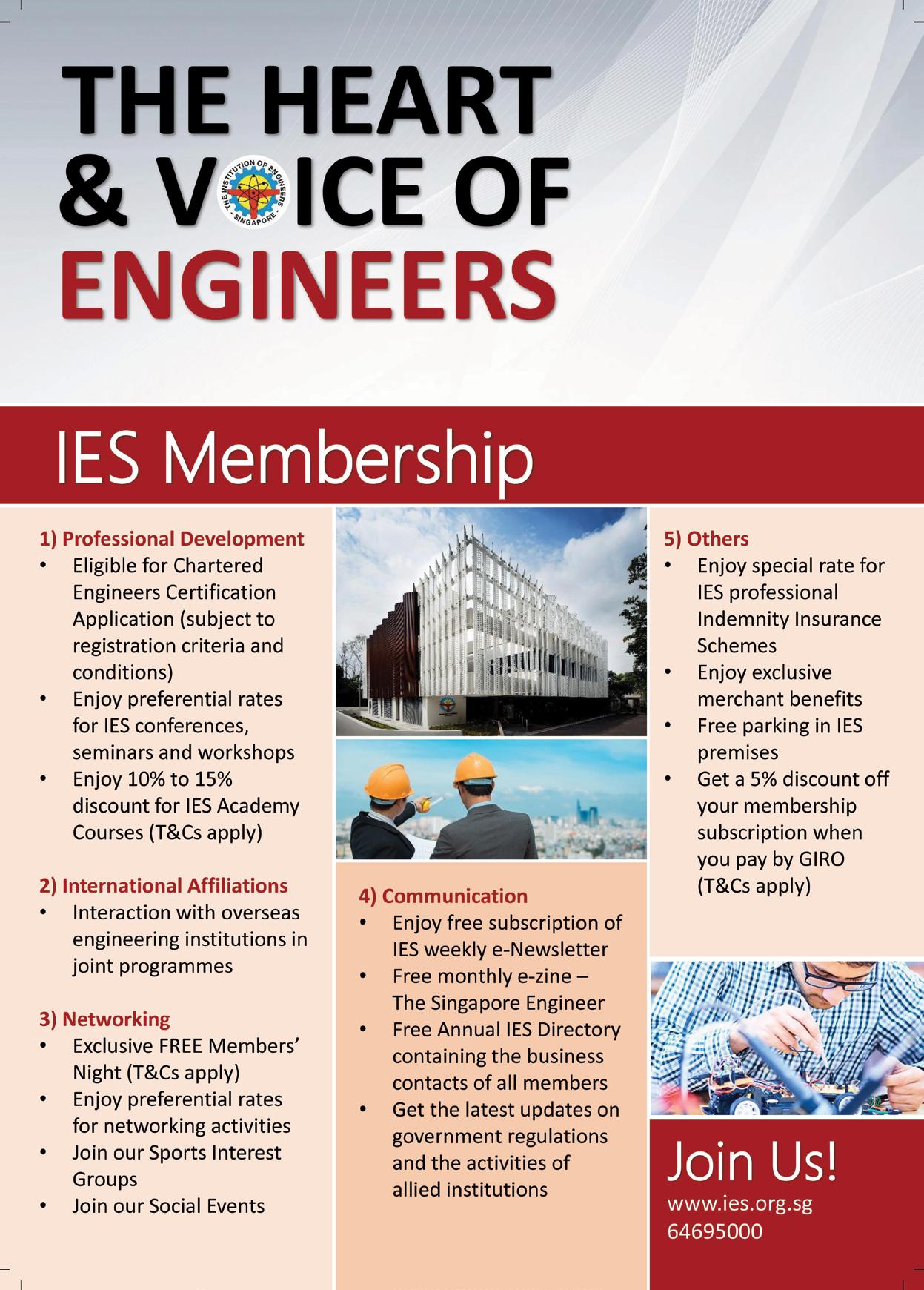
14 minute read
Designing a water network for a harsh desert environment Software applications helped successfully deliver the project at a lower cost
DESIGNING A WATER NETWORK FOR A HARSH DESERT ENVIRONMENT
Software applications helped successfully deliver the project within 88% of the initially proposed budget.
Layout of the Al-Wajeed Water Treatment Plant.
Providing water in the desert
The Rub’ al Khali, also known as the Empty Quarter, is a sand desert that covers about 650,000 km2 of the southern Arabian Peninsula, stretching into parts of Saudi Arabia, Oman, the United Arab Emirates, and Yemen. Saudi Arabia developed the master plan for the Al-Wajeed Water Treatment Plant to safeguard the well-being of over half a million people living in or near the Rub’ al Khali, who are affected by drought conditions. These conditions have become exacerbated by pollution and the drying-up of local wells, which is why the initiative to develop a water network is so important to the region. As part of Saudi Arabia’s Vision 2030 Initiative, the USD 500 million project involved the construction of a world-class treatment plant and conveyance system with a capacity of 68,000 m3 per day for Phase One, which would be upgraded to a capacity of 108,000 m3 per day in a later phase. All concrete works and infrastructure, however, would need to be completed in Phase One, including 600 km of water pipelines, high-volume reservoirs and access roads. As the lead in the design and construction of this project, Khatib & Alami faced numerous challenges, many stemming from the harsh climate of the desert where the water system would be located. Access roads to the site needed to be designed and built in a way to protect them from moving sand dunes. Also, the transmission line needed to pass through sand dune areas, meaning that the team would need to coordinate the design with the construction team and the pipe supplier. Khatib & Alami would need to work to resolve the unstable dune material, establish a strong road along the pipeline for access, and provide a concrete base that considered the depth of the pipes and the accumulation of future sand dunes.
Importing GIS data for better decision-making
Khatib & Alami began by developing a GIS asset registry of existing wet and dry utilities, as well as population data and other information that would significantly impact the design. Using this data was essential when the team began developing the hydraulic model of the entire system and considered multiple alternatives and operational scenarios based on the harsh conditions. Khatib & Alami chose Bentley’s OpenFlows applications to manage all this data, for design, analysis, optimisation, and decision support. The team began by importing all the digital data from the GIS registry - including network infrastructure and topology, location and status of valves, and characteristics and attributes of pipes, pumps, and pressure loggers - into OpenFlows WaterGEMS. In this way, any change in the asset registry would be reflected in the hydraulic model, and vice versa. By using this application, the team created an optimised hydraulic model that included the local water source, multiple pump stations, and collection reservoirs.
Developing optimised hydraulic designs
By using OpenFlows WaterGEMS, Khatib & Alami also optimised the hydraulic designs of the tanker filling stations. These designs were important because, previously, some of water networks in the cities near the Rub’ al Khali failed to meet the necessary water demands. With the new, updated design created in OpenFlows WaterGEMS, the networks would feed the required amount of water to the reservoirs in these cities, which were connected to elevated water tanks that would feed the multiple filling stations by gravity. The project team was also able to conduct extended period simulation by using OpenFlows WaterGEMS. This capability helped Khatib & Alami optimise the network’s hydraulic performance by scheduling pump operation and ensuring that the water tanks are filled with the required amount of water. By building the hydraulic model with OpenFlows WaterGEMS, the team could visualise the entire transmission system, including where all the electromechanical equipment would be located once construction was complete. Also, using OpenFlows applications, Khatib & Alami developed a filtration system to remove contaminants. Additionally, the team used OpenFlows SewerGEMS to model the sanitary network. By optimising the hydraulic designs using OpenFlows applications, the team was able to reduce its drawing time and production efforts.
Modelling system components for innovative solutions
Once a steady-state hydraulic model and all the information was input into OpenFlows WaterGEMS, the team modelled the transmission system’s components using OpenFlows HAMMER. This practice allowed team members to check the system performance under all types of conditions, such as power failure to the pumps or motor sets. The team could also ensure that the design provided the required protection elements, including surge vessels, open surge tanks, surge valve anticipators, and pressure relief valves. By modelling the components in this application, the team was able to simulate design options and create innovative solutions. One example involves the installation of an inverted U at the raw water tanks’ inlets to minimise the surge vessel volumes at each well. This installation led to a maintenance-free, anti-surge device.
Delivering an award-winning project in the region
By using OpenFlows applications, the team at Khatib & Alami reduced design modifications by 25%, saving 10,000 resource hours, and delivering the project within 88% of the initially proposed budget. The inverted-U anti-surge devices proposed on OpenFlows HAMMER significantly reduced the lifecycle cost and minimised the surge vessel volumes at each well, helping to reduce the total construction cost by USD 500,000. OpenFlows applications also helped the team realise that it could use excavated material to backfill pipe trenches, which it did on 70% of the trenches, saving USD 3 million in construction costs. Due to these significant results, the project won numerous awards, including the Infrastructure Project of the Year Award at the prestigious Construction Week Awards 2018. The highly complex Al-Wajeed Water Treatment Plant has been a major socio-economic catalyst for infrastructure development in a part of the country previously viewed as unreachable for investment opportunities. This project employed over 2,000 workers at its peak and is expected to last for many years, despite extremely harsh desert conditions. The project has spurred further growth in the area, showing opportunities for future development while also ensuring the safety and well-being of a population of half a million and growing.
PROJECT DATA
Project
Al-Wajeed Water Treatment Plant
Location
Al-Wajeed, Tathleeth and Bisha, Asir Region, Saudi Arabia
Designer
Khatib & Alami
Project Objectives
• To design a treatment plant and conveyance system amidst harsh desert conditions. • To produce a design model that would allow for effective communication between all project participants.
Products Used
• OpenFlows FLOOD • OpenFlows HAMMER • OpenFlows SewerGEMS • OpenFlows WaterGEMS
C-ASTRA ROBOT DEACTIVATES AND DESTROYS VIRUSES
The COVID-19 outbreak has generated a massive need to disinfect surroundings fast. Surfaces contaminated with COVID-19 pose a grave threat to the safety of healthcare workers, patients, frontline responders and the general public. Deactivating the COVID-19 virus on surfaces is a critical and necessary step to protect and disinfect, especially when businesses have resumed and workplaces have reopened. There is, therefore, an urgent demand for deep cleaning and disinfection services in Singapore. To meet this demand, Omni-Health, a Singapore-based health automation distributor, has brought in the C-Astra Autonomous disinfection robot, developed and manufactured by India-based healthcare technology corporation, Invento Robotics.
Semi-autonomous operation
The C-Astra differs from other disinfection robots currently in the market, which are primarily used only to clean and vacuum floor surfaces, and require manual operation to move them around. Furthermore, they are unable to disinfect surfaces that they do not come into contact with. The C-Astra can navigate semi-autonomously in any environment, using the Light Detection and Ranging (LIDAR) and Simultaneous Localisation and Mapping (SLAM) technology, while the operator can control the robot from up to 30 m, via a mobile application. The robot has six ultraviolet (UV) lamps which help to destroy 99% of viruses, including the COVID-19 virus. This removes the need for cleaners to be in contact with surfaces, thereby reducing the risk of getting infected. The use of the Human In The Loop system enables operators to remotely assist the unit if it gets stuck, and to monitor the unit for safety. This reduces human contact of the robot in areas that require disinfection, thereby reducing the chance of cross-infection. The unit can run up to six hours continuously on a rechargeable battery pack which takes four hours to charge. Through a novel fleet management system, individual units can be monitored around the hospital, office or retail location, and it enables data collection and management to be performed remotely by a professional.
Designed for use in a variety of spaces
Hospitals, medical office buildings, isolation facilities and even public places such as shopping malls and community spaces can benefit immediately from C-Astra disinfection, as the global pandemic demonstrates the need for quick and effective disinfection. C-Astra robot has been used in several hospitals in India, including the Apollo Hospital in Chennai. Moving forward, Omni-Health hopes to bring more of these units to health institutions and facility management companies in Singapore.
The C-Astra Robot
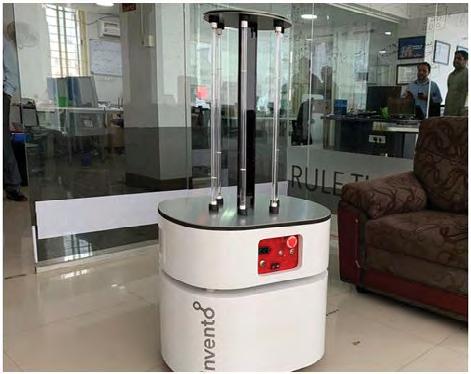
Covid- 19 Disinfection Percentage OW Mode of System UV Light Specification Type of Movement Automatic / Manual Distinguish Humans Disinfection Reports User Interface Data Storage Mobility Engine Area Coverage Speed Full Charging Duration Wireless Connectivity Total Weight Mapping Facility Method of Disinfection Time of Disinfection Remote Control. Life Span of UV Lights
99.0%
Autonomous Robot Wave Length 253.7 Nanometres Automatic Remote control via an app Alarm on identifying a movement Report Available User Interface with Navigation Status Cloud Data Storage A Wheelbase with an Engine 360 Degrees Up to 4.0 Km/H 4 Hours (6 Working Hoursl Via Wi-Fi 50 Kg Yes UVC Dry & Chemical Free 5 Continuous Hours Via App 9,000 Hours
MAJOR VERSION UPDATE OF ROBOTMASTER ROBOTIC SOFTWARE NOW AVAILABLE
Hypertherm, a US-based manufacturer of industrial cutting systems and software, recently announced the release of Robotmaster Version 7.3 offline robot programming software with extensive features and enhancements designed to further simplify robotic programming. Additions found in V7.3 include: • Support for the newest CAD file types, 3D printing software, and third-party plug-ins for software brands such as CATIA, SolidWorks, Autodesk Inventor, Siemens,
Solid Edge, AutoCAD, Pro-E/Creo, Rhino, and more. • Performance improvements for faster data processing and robot code output when creating additive manufacturing paths in addition to post processor enhancements for major robot brands such as Kuka,
ABB, and Fanuc. • The addition of new modules including a spray simulation module for companies which use robots to spray, coat, or paint products, as well as a module that simulates material deposition during additive manufacturing, adhesive dispensing, welding, and similar applications. • Numerous productivity enhancements to existing modules for more accurate time estimates, the ability to quickly import g-code from 3D slicing software including Cura and Slic3r, and the ability to automatically set a cutting direction based on material location with respect to the path. • Notable enhancements to the path import module providing users with an option to read custom instructions and set process activations and deactivations directly from imported code and enjoy a more accurate interaction, process simulation, and robot code output for both g-code and APT formats. “The many new features found in V7.3 are based on close work with many of our current customers to understand how we can further streamline offline robotic programming. By adding support for more software types, files, and robots, we are helping customers solve sometimes complex challenges quickly and easily”, said Garen Cakmak, Leader of Hypertherm’s Robotic Software Team. Building upon the completely redesigned V7 architecture, first introduced in 2018, Robotmaster uses integrated CAD/ CAM functionality to make robotic programming easy and intuitive for everyone, even first-time users. It is used by a wide range of industries to program robots for tasks that include surfacing, 3D milling, additive
manufacturing, welding, painting, and more.
Robotmaster software
Hypertherm’s Robotic Software team developed Robotmaster, a CAD/CAM based offline robot programming software. Its architecture harnesses robot flexibility to exploit the full capabilities of any robotic cell, while improving the profitability of high-mix, lowvolume productions. Hypertherm designs and manufactures industrial cutting
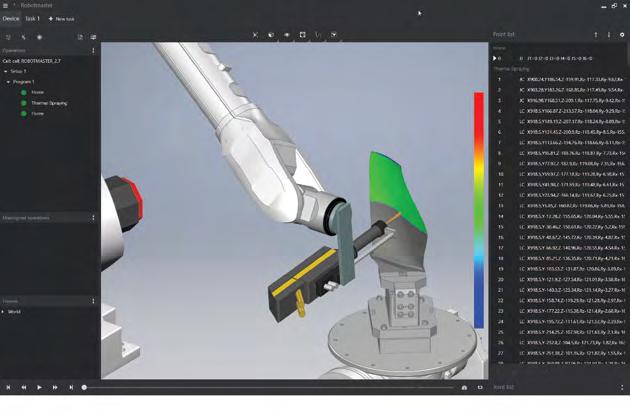
Robotmaster V7.3 includes the addition of new modules including a spray simulation module for companies which use robots to spray, coat, or paint products.
products for use in a variety of industries.

FIRST CATALOGUE RANGE OF INTELLIGENT PLAIN BEARINGS LAUNCHED
A leading international manufacturer of energy chain systems and polymer plain bearings, igus, has now developed its first isense plain bearing series with five ‘iglidur’ materials for predictive maintenance. Whether in the food industry, textile machines, forklifts or construction machines, with the intelligent ‘isense’ plain bearings, users receive a durable and lubricationfree solution that provides information about their wear. Maintenance can be planned in good time, and machine and system failures are prevented. Wear-resistant parts such as plain bearings must withstand extreme loads in machines and plant. If one of these bearings fails, there will be trouble. For this reason, igus presented the first study of an intelligent plain bearing at the Hannover Messe 2019. Technology integrated in the bearing detects wear in advance and gives the user a signal in good time, when the wear limit is reached. After many series of tests in the company’s 3,800 m2 in-house test laboratory, igus has now developed the first isense standard range for its lubrication-free iglidur plain bearings. The catalogue range includes five materials with which a large part of highly stressed applications can be covered. They are the FDA-compliant material, iglidur A180, which is specifically designed for use in the food industry; the heavy-duty bearing, iglidur Q2E, for use in construction machinery and agricultural engineering; the all-rounder material, iglidur G; the endurance runner, iglidur J; as well as iglidur P210, for pivoting and rolling applications. All the intelligent plain bearings are offered in three dimensions - each with an inner diameter of 20 mm, 30 mm or 40 mm.
System connection according to customer requirements
To connect the isense plain bearings, igus has four suitable cables with an oil-resistant and media-resistant PUR outer jacket, in four standard lengths, from 1 m to 10 m, in its portfolio. In addition, the user has the choice between two connector types. The sensor-measured data can be integrated by the machine and equipment operators into their systems, in different ways. Three readout units are offered for this purpose. Either the user can manually read out all plug-in points, or install a control unit with a red/green display on the machine, which provides information about the condition of the plain bearings. Another possibility is the connection to icom.plus. For this purpose, a radio module sends the sensor data by wireless transmission to the communication module. From here, the integration of data to the IoT, cloud system or to the customer network is possible on a wire-bound basis. The customer has the freedom to choose the most
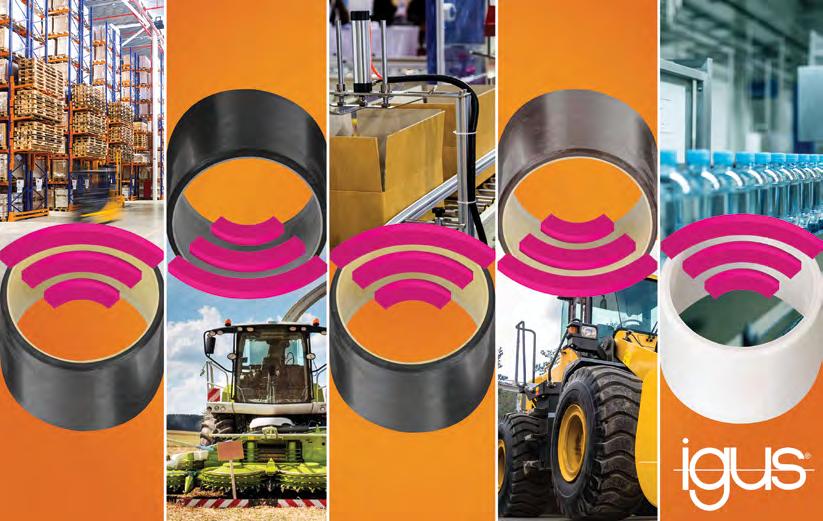
suitable way to read the data.
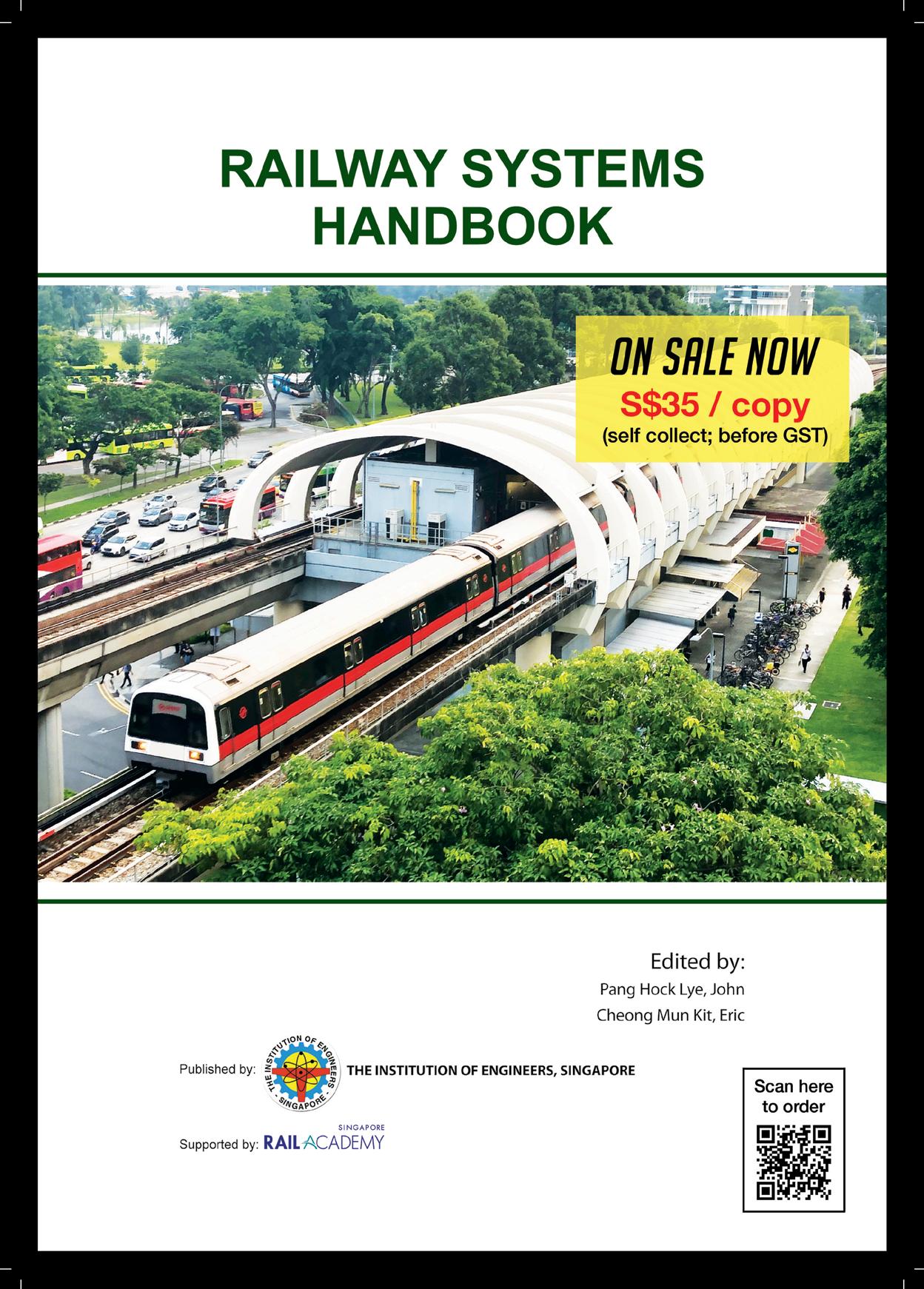
IES VISIT TO THK HOME FOR THE DISABLED @ EUNOS
From time to time, the IES Community Service Committee (CSC) organises visits to various Homes, as part of our Institution’s corporate social responsibility to care for the underprivileged. On Saturday, 10 October 2020, members of the committee visited Thye Hua Kwan (THK) Home for the Disabled @ Eunos, laden with goodies, board games, stationery and mooncakes sponsored by Sunlight Electrical Pte Ltd. They presented the residents with goodie bags of said items, as well as dental kits and toothpaste sponsored by local brand Pearlie White.
ADVERTISERS’ INDEX
IES Chartered Engineer –––––––––––––––––––– Page 01 IES Membership –––––––––––––––––– Inside Back Cover IES Railway Systems Handbook –––––––––––––– Page 39
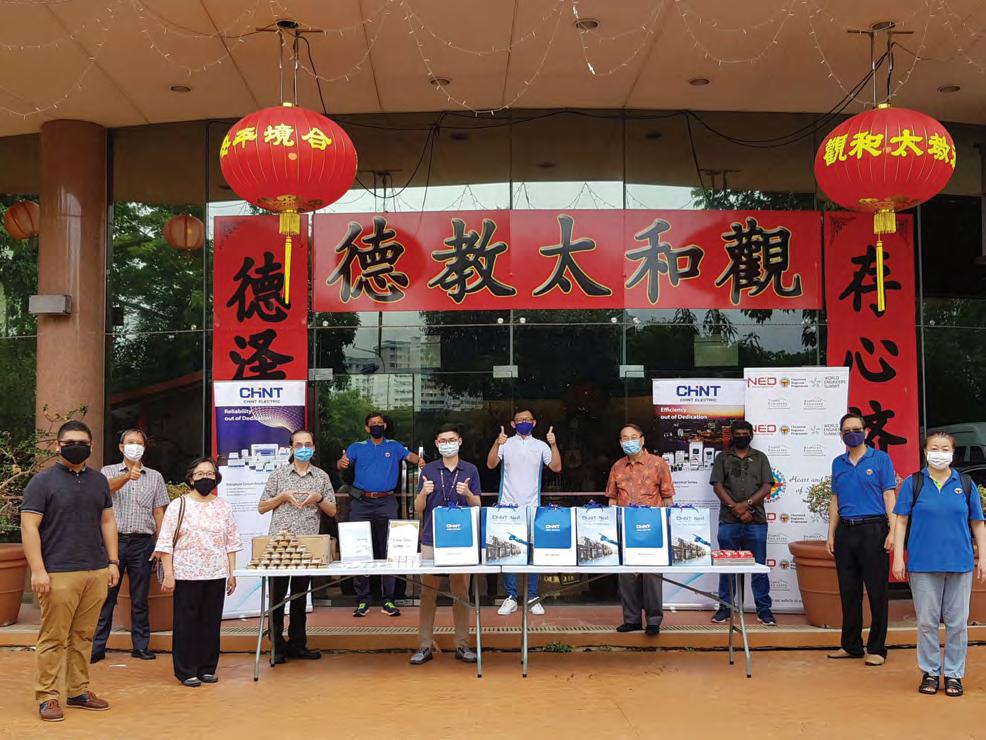
The THK Home’s management observed that the bags were filled to the brim with lovely and useful items. On receiving the goodie bags, the residents incessantly expressed their appreciation. “The Home deeply appreciates the charitable spirit and support from IES and the sponsors, especially in these trying times with COVID-19,” said Mr Edwin Fu, Superintendent, THK Home for the Disabled @ Eunos. If you would like to contribute your time and energy with the CSC for a good cause, kindly write in to the Secretariat at ies@iesnet.org.sg. We will link you up
shortly. Thank you!
Singapore University –––––––––––––of Social Sciences Inside Front Cover
Who's Who In Engineering, ––––––Singapore (3rd Edition) Outside Back Cover
